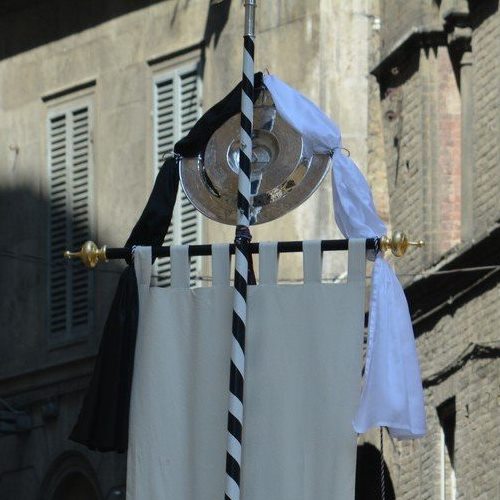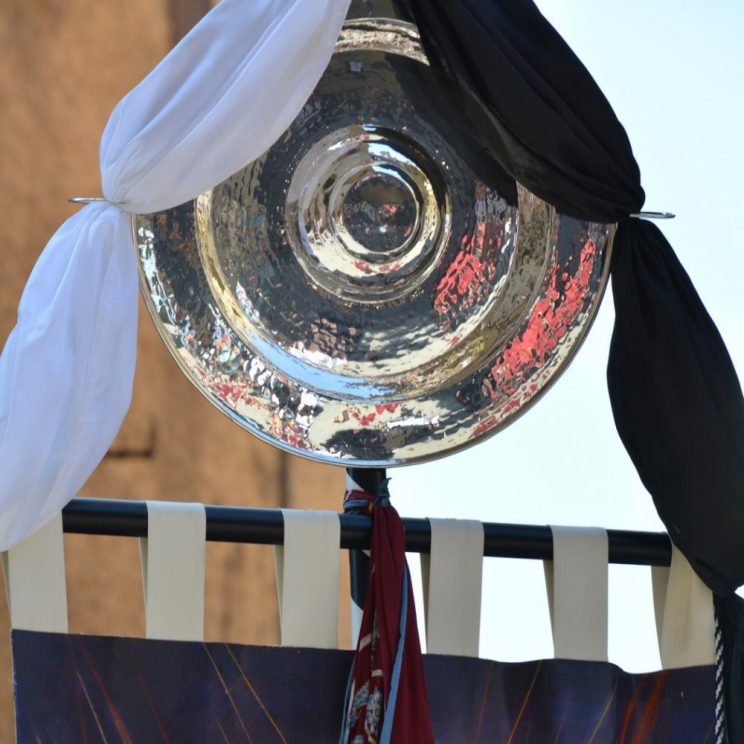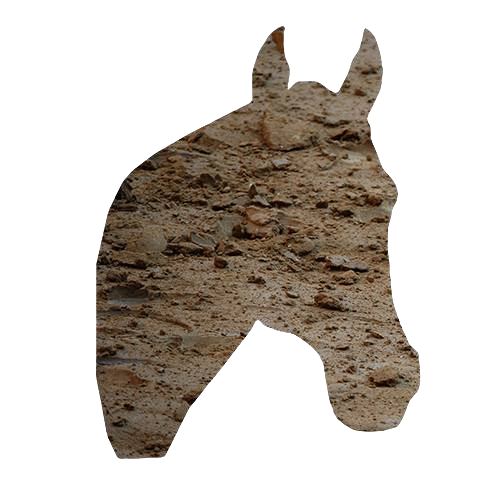www.thepalio.eu - dal Belgio con amore
Drappellone
The drappellone (“banner”), called cencio in Siena, is the only trophy to be won by the participating neighborhoods.

The drappellone is an elongated rectangular piece of silk, painted by hand by an artist appointed by the city. It is held vertically on a black and white stick with a silver plate on top with two black and white “plumes” that are draped on the sides.
The palio stays in the museum of the winning district. The piatto (silver plate) must be returned to the city to be reused for the palio of the following year. So there are two, one for July and one for August. The winning district is written on the back. The plates are replaced every 10 years. Just before the contrada has to give back the record they organize the “cena del piatto” to close the festive year (after the victory).

The value of the drappellone is immeasurable. It perfectly reflects a period in the history of Siena. For example, there are drappelloni that represent certain symbols of government in a certain period: the kingdom of Savoy, symbols from fascist Italy, representation of life during the Republic, the first man on the Moon, …
The artist must always take into account certain, recorded, whether or not sacred symbols. For example, the Palio of July is in honor of the Madonna di Provenzano and only the head of the Madonna is always depicted. In August we walk in honor of the rapture of Mary. You will see that the Madonna is being shown more fully. Also the coat of arms of the city must be on it, just like the 3 parts of the city. The colors of the 10 participating neighborhoods must be clearly displayed. With regard to the (art) style in which it is made, there are no limits or obligations.
The drappellone is presented a week before the race in the town hall.







We made an overview per decade, deliberately starting from 1945. In the early years after the war, Palios were mostly painted by the same people. Only from the 70s did they choose a different artist every time. In recent years, there has regularly been a foreigner among them. The Palio was painted three times by a Belgian artist : Jean Michel Folon (1999) and Jean Claude Coenegracht (2016) and Charles Szymkowicz (2018)
Drappellone can be found on pages on our Dutch website (pages will open in new tab) :
- Drappelloni Aquila
- Drappelloni Bruco
- Drappelloni Chiocciola
- Drappelloni Civetta
- Drappelloni Drago
- Drappelloni Giraffa
- Drappelloni Istrice
- Drappelloni Leocorno
- Drappelloni Lupa
- Drappelloni Nicchio
- Drappelloni Oca
- Drappelloni Onda
- Drappelloni Pantera
- Drappelloni Selva
- Drappelloni Tartuca
- Drappelloni Torre
- Drappelloni Valdimontone
Last update : 4 july 2022
